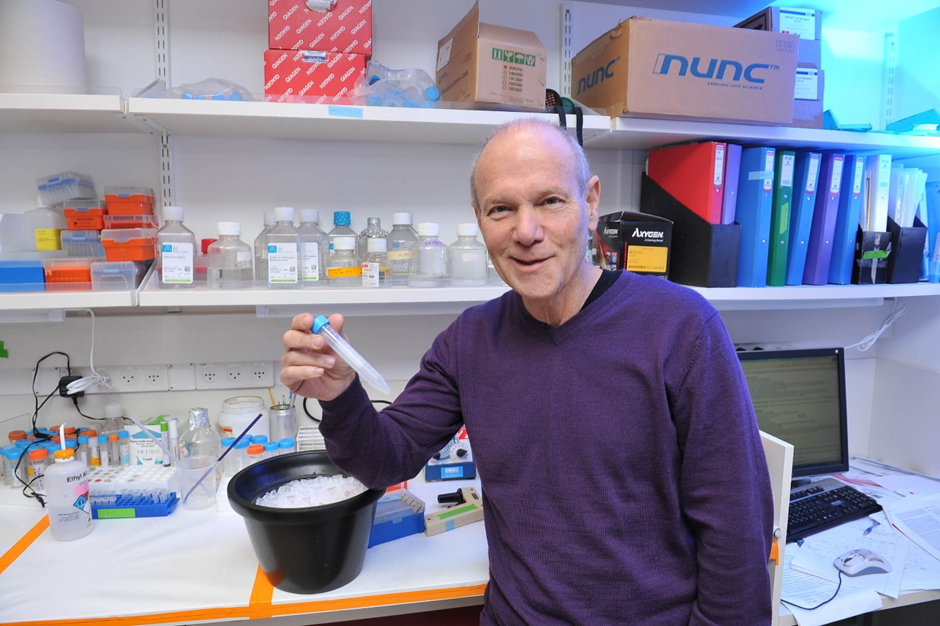
Comprehensive study shows a significant ongoing decline in sperm counts of Western men, pointing to impaired male health and decreasing fertility
SUMMARY: A rigorous and comprehensive meta-analysis of data collected between 1973 and 2011 finds that among men from Western countries who were not selected on the basis of their fertility status, sperm concentration declined by more than 50%, with no evidence of a “leveling off” in recent years. These findings strongly suggest a significant decline in male reproductive health that has serious implications beyond fertility and reproduction, given recent evidence linking poor semen quality with a higher risk of hospitalization and death. Research on causes of this ongoing decline and their prevention is urgently needed.
Jerusalem, July 25, 2017 — In the first systematic review and meta-analysis of trends in sperm count, researchers from the Hebrew University of Jerusalem’s Faculty of Medicine and the Icahn School of Medicine at Mount Sinai report a significant decline in sperm concentration and total sperm count among men from Western countries. The study is published in Human Reproduction Update, the leading journal in the fields of Reproductive Biology and Obstetrics & Gynecology.
By screening 7,500 studies and conducting a meta-regression analysis on 185 studies between 1973 and 2011, the researchers found a 52.4 percent decline in sperm concentration, and a 59.3 percent decline in total sperm count, among men from North America, Europe, Australia and New Zealand who were not selected based on their fertility status. In contrast, no significant decline was seen in South America, Asia, and Africa, where far fewer studies have been conducted.
The study also indicates the rate of decline among Western men is not decreasing: the slope was steep and significant even when the analysis was restricted to studies with sample collection between 1996 and 2011.
The research was led by Dr. Hagai Levine, Head of the Environmental Health Track at the Hebrew University-Hadassah Braun School of Public Health and Community Medicine, Jerusalem, with Dr. Shanna H. Swan, Professor in the Department of Environmental Medicine and Public Health at the Icahn School of Medicine at Mount Sinai, New York, and an international team of researchers from Brazil, Denmark, Israel, Spain, and the United States.
While declines in sperm count have been reported since 1992, the question has remained controversial because of limitations in past studies. However, the current study uses a broader scope and rigorous meta-regression methods, conservatively addresses the reliability of study estimates, and controls for factors that might help explain the decline such as age, abstinence time, and selection of the study population.
“Given the importance of sperm counts for male fertility and human health, this study is an urgent wake-up call for researchers and health authorities around the world to investigate the causes of the sharp ongoing drop in sperm count, with the goal of prevention,” said Dr. Hagai Levine, also an adjunct assistant professor at the Icahn School of Medicine at Mount Sinai, New York.
The findings have important public health implications. First, these data demonstrate that the proportion of men with sperm counts below the threshold for subfertility or infertility is increasing. Moreover, given the findings from recent studies that reduced sperm count is related to increased morbidity and mortality, the ongoing decline points to serious risks to male fertility and health.
“Decreasing sperm count has been of great concern since it was first reported 25 years ago. This definitive study shows, for the first time, that this decline is strong and continuing. The fact that the decline is seen in Western countries strongly suggests that chemicals in commerce are playing a causal role in this trend,” Dr. Shanna H. Swan.
While the current study did not examine causes of the observed declines, sperm count has previously been plausibly associated with environmental and lifestyle influences, including prenatal chemical exposure, adult pesticide exposure, smoking, stress, and obesity. Therefore, sperm count may sensitively reflect the impact of the modern environment on male health across the lifespan and serve as a “canary in the coal mine” signaling broader risks to male health.
The Hebrew University-Hadassah Braun School of Public Health and Community Medicine is the first school of public health in Israel and one of five schools within the Hebrew University’s Faculty of Medicine. Since 1961, both in Israel and internationally, the Braun School, which is APHEA accredited, has improved the physical, mental and social well-being of populations, trained a public health workforce for the challenges of today and the future, conducted public health research, and made an impact on health services and policy. The School’s renowned International Master’s in Public Health (IMPH) program prepares graduates to take up key positions as leaders and teachers of public health in their home countries.
# # #
Researchers who participated in this study are affiliated with Hebrew University-Hadassah Braun School of Public Health and Community Medicine, and the Hebrew University Center of Excellence in Agriculture and Environmental Health, Jerusalem, Israel; Department of Environmental Medicine and Public Health, and Gustave L. and Janet W. Levy Library, Icahn School of Medicine at Mount Sinai, New York, NY, USA; University Department of Growth and Reproduction, University of Copenhagen, Rigshospitalet, Copenhagen, Denmark; Department of Physiology, Federal University of Parana, Curitiba, Brazil; Division of Preventive Medicine and Public Health, University of Murcia School of Medicine and Biomedical Research Institute of Murcia, Murcia, Spain; Faculty of Health Sciences, Ben-Gurion University of the Negev, Beer Sheva, Israel.
CITATION: Temporal trends in sperm count: A systematic review and meta-regression analysis. Hagai Levine, Niels Jørgensen, Anderson Martino‐Andrade, Jaime Mendiola, Dan Weksler-Derri, Irina Mindlis, Rachel Pinotti, Shanna H Swan. Human Reproduction Update, July 25, 2017, doi:10.1093/humupd/dmx022. Link: https://academic.oup.com/humupd/article-lookup/doi/10.1093/humupd/dmx022.
FUNDING: Researchers received support from the Environment and Health Fund (EHF), Jerusalem, Israel; American Healthcare Professionals and Friends for Medicine in Israel (APF); Israel Medical Association (IMA) [Levine]; Research Fund of Rigshospitalet (grant no. R42-A1326) [Jørgensen); The Brazilian National Council for Scientific and Technological Development [Martino-Andrade]; The Mount Sinai Transdisciplinary Center on Early Environmental Exposures (NIH P30ES023515) [Swan].




